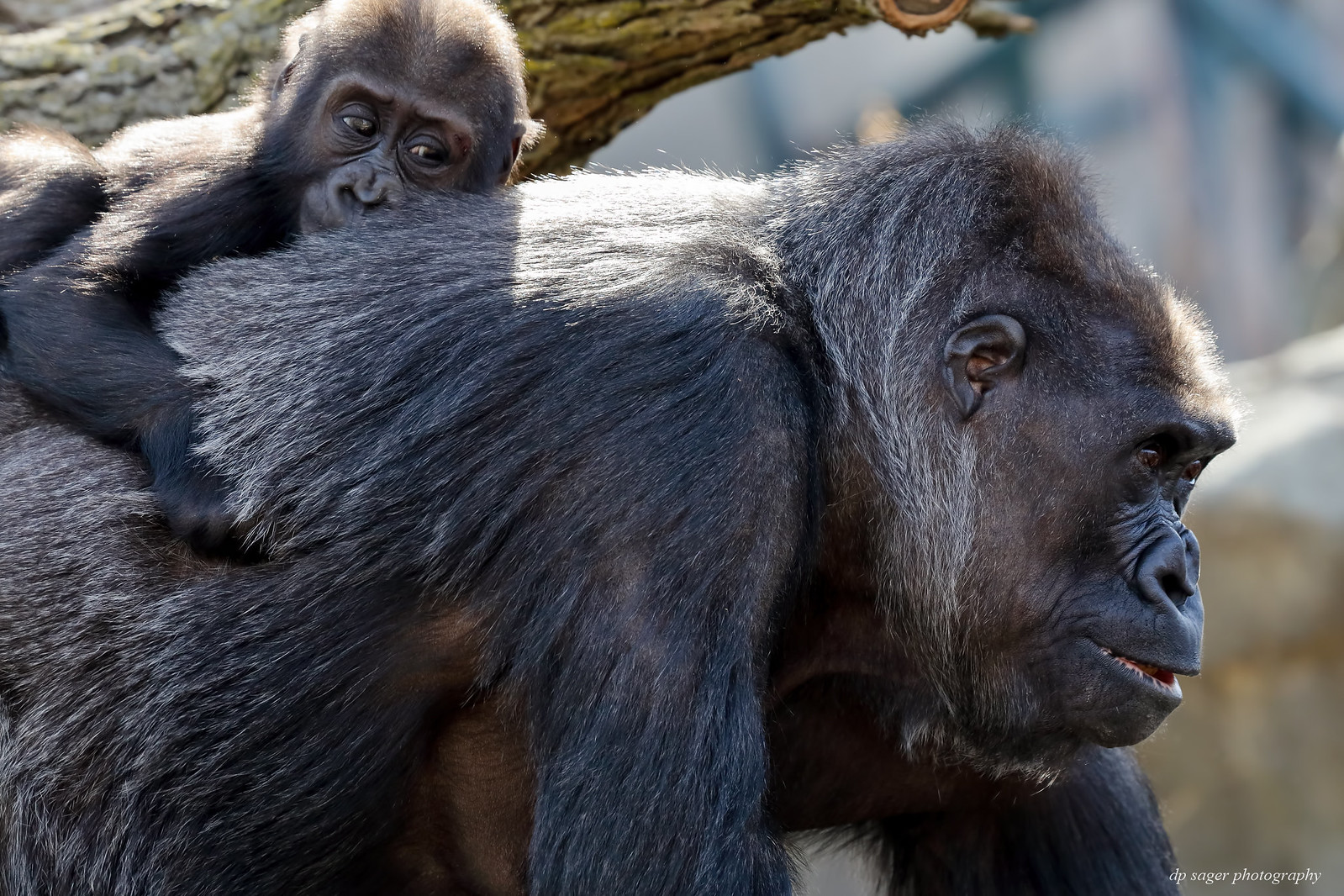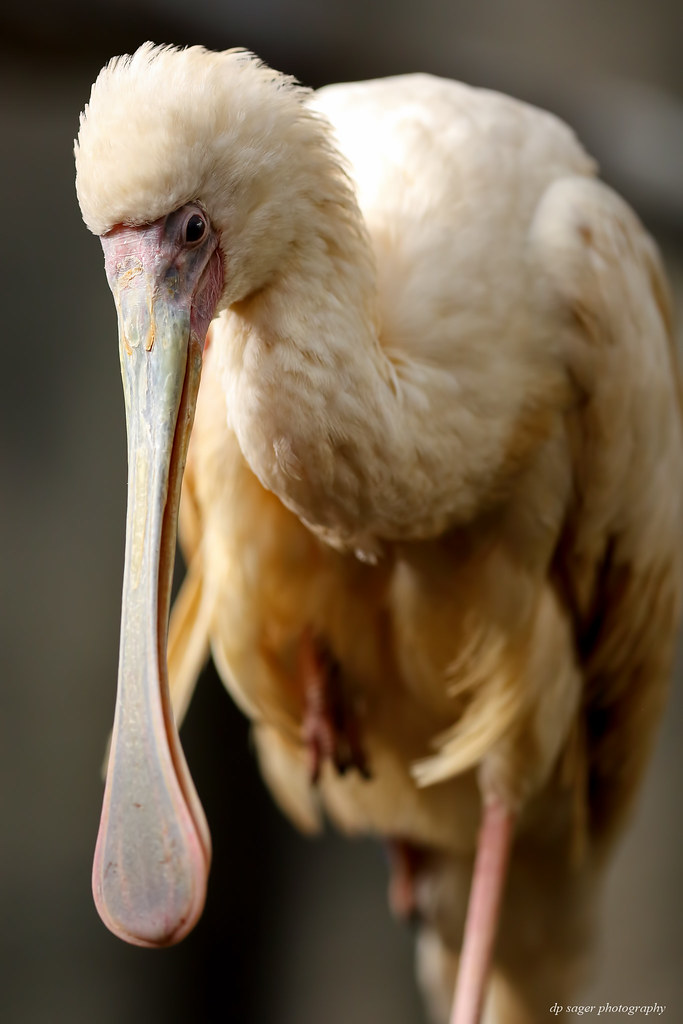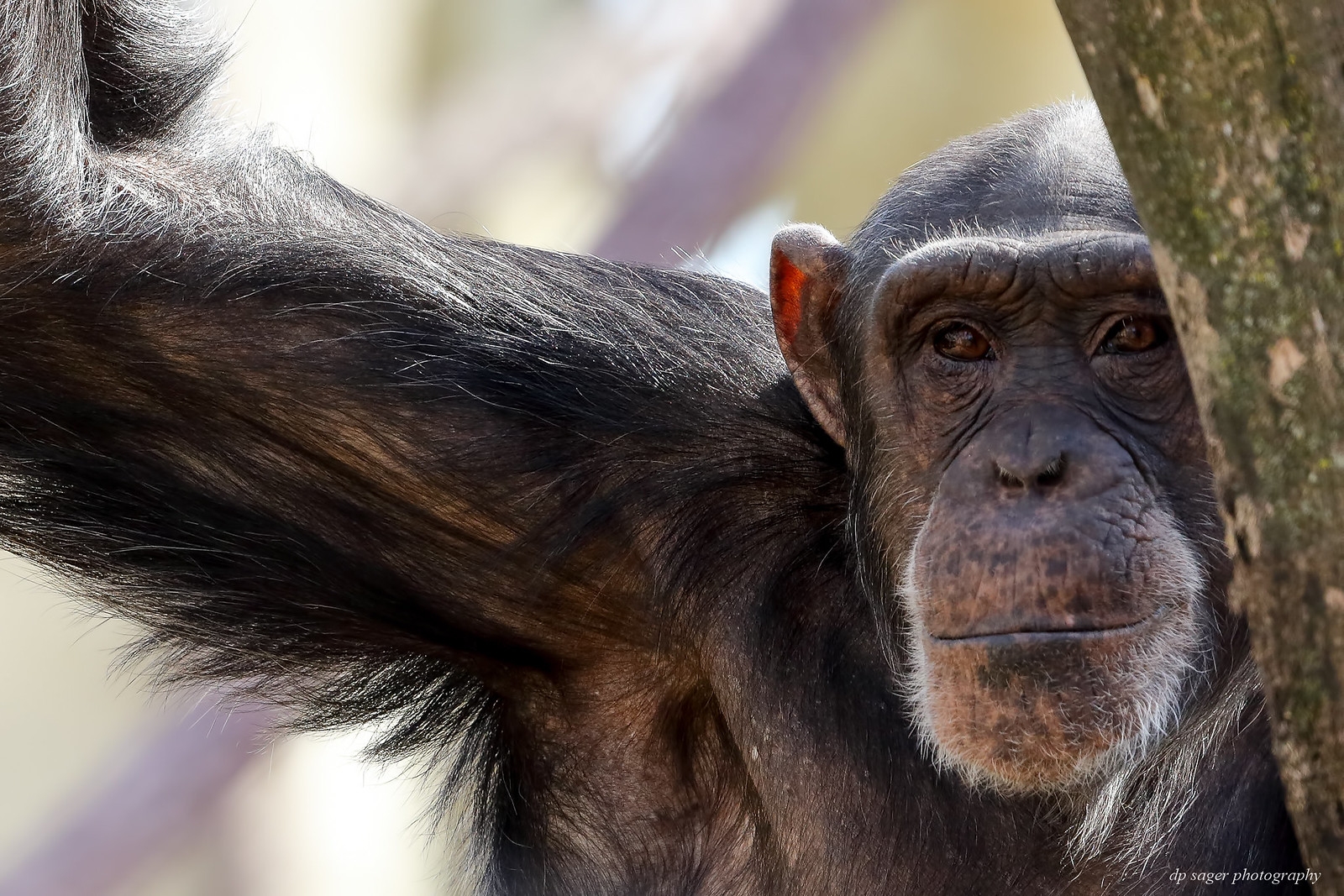Continued visits to the Lincoln Park Zoo
Mar 8, 2018 10:26:18 #
Chacoan peccaries are pig-like mammals with bristly, brown-gray fur, tough, leathery snouts and strong jaws and tusks for crushing seeds and slicing plant roots. Weighing 60-90 pounds, they are the largest and least common of three peccary species. Their skeletons and teeth differ from pigs. They also have scent glands on their ridged backs that give off a strong, musky odor.
Lincoln Park Zoo
Chicago, IL
Feb 2016
Chacoan Peccary

The largest living bird, the ostrich can reach up to nine feet tall and 285 pounds. The species has a black chest and wings, a white underside, and long, bare neck and legs. The ostrich cannon fly.
Lincoln Park Zoo
Chicago, IL
Feb 2016
Ostrich

The Salmon-crested cockatoo is unique to the Seram archipelago in eastern Indonesia. In the wild the salmon-crested cockatoo inhabits lowland forests below 1000 meters. The diet consists mainly of seeds, nuts and fruit, as well as coconuts. There is additional evidence that they eat insects off the ground. Pet cockatoos will experience anemia if their diet does not include enough protein.
Cincinnati Zoo
Cincinnati, OH
July 2014
Salmon crested cockatoo

Lincoln Park Zoo
Chicago, IL
Feb 2016
The Inca tern has a dark gray body and a red beak and legs. Moustache-like tufts of white feathers on each side of the beak signal maturity in males and females. The bird feeds primarily on small fish, such as anchovies. The Inca tern nests on rocky cliffs in Northern Peru to southern Chile, laying its eggs in natural holes and burrows.
Inca Tern by Paul Sager, on Flickr

The western lowland gorilla is the largest of the living primates. Males can be up to 6 feet tall and 400 pounds while females range to 5 feet and 200 pounds. They have black to brown-gray coats that turn gray with age.
Lincoln Park Zoo
Chicago, IL
Feb 2016
Riding

The African spoonbill has a white body with a red face and feet. The species' long, thin beak ends in a flat, extended bulge resembling a spoon. The African spoonbill's long legs and thin, pointed toes enable it to walk easily through varying depths of water in wetlands throughout sub-Saharan Africa. To hunt, the bird opens its bill in the water and sweeps it back and forth, snapping at any fish, crustaceans or insects it comes into contact with.
Lincoln Park Zoo
Chicago, IL
Feb 2016
African Spoonbill

Chimpanzees are found across equatorial Africa, from Senegal to Uganda. They occupy various habitats, including rain forest, mountain forest, woodlands and open savanna. Chimpanzees live in “fusion-fission” societies: large groups of animals commonly splinter into smaller pairings and then re-gather. Males in a group establish a dominance hierarchy that influences breeding, but mating is fluid.
Lincoln Park Zoo
Chicago, IL
Feb 2016
Chimpanzee

These images are sized to fill your wide-screen display. Try using <F11> to maximize your browser window for the full effect. If the images overshoot your display, such as a laptop, just click on the image or the URL link and they'll resize to your screen from the host Flickr site. You can click a bit further into the image details on the Flickr page, if desired. EXIF data is available from the host Flickr pages as well. On the Flickr site, use your <L>key for Large and the <F11> for the full-screen.
Lincoln Park Zoo
Chicago, IL
Feb 2016
Chacoan Peccary

The largest living bird, the ostrich can reach up to nine feet tall and 285 pounds. The species has a black chest and wings, a white underside, and long, bare neck and legs. The ostrich cannon fly.
Lincoln Park Zoo
Chicago, IL
Feb 2016
Ostrich

The Salmon-crested cockatoo is unique to the Seram archipelago in eastern Indonesia. In the wild the salmon-crested cockatoo inhabits lowland forests below 1000 meters. The diet consists mainly of seeds, nuts and fruit, as well as coconuts. There is additional evidence that they eat insects off the ground. Pet cockatoos will experience anemia if their diet does not include enough protein.
Cincinnati Zoo
Cincinnati, OH
July 2014
Salmon crested cockatoo

Lincoln Park Zoo
Chicago, IL
Feb 2016
The Inca tern has a dark gray body and a red beak and legs. Moustache-like tufts of white feathers on each side of the beak signal maturity in males and females. The bird feeds primarily on small fish, such as anchovies. The Inca tern nests on rocky cliffs in Northern Peru to southern Chile, laying its eggs in natural holes and burrows.
Inca Tern by Paul Sager, on Flickr

The western lowland gorilla is the largest of the living primates. Males can be up to 6 feet tall and 400 pounds while females range to 5 feet and 200 pounds. They have black to brown-gray coats that turn gray with age.
Lincoln Park Zoo
Chicago, IL
Feb 2016
Riding

The African spoonbill has a white body with a red face and feet. The species' long, thin beak ends in a flat, extended bulge resembling a spoon. The African spoonbill's long legs and thin, pointed toes enable it to walk easily through varying depths of water in wetlands throughout sub-Saharan Africa. To hunt, the bird opens its bill in the water and sweeps it back and forth, snapping at any fish, crustaceans or insects it comes into contact with.
Lincoln Park Zoo
Chicago, IL
Feb 2016
African Spoonbill

Chimpanzees are found across equatorial Africa, from Senegal to Uganda. They occupy various habitats, including rain forest, mountain forest, woodlands and open savanna. Chimpanzees live in “fusion-fission” societies: large groups of animals commonly splinter into smaller pairings and then re-gather. Males in a group establish a dominance hierarchy that influences breeding, but mating is fluid.
Lincoln Park Zoo
Chicago, IL
Feb 2016
Chimpanzee

These images are sized to fill your wide-screen display. Try using <F11> to maximize your browser window for the full effect. If the images overshoot your display, such as a laptop, just click on the image or the URL link and they'll resize to your screen from the host Flickr site. You can click a bit further into the image details on the Flickr page, if desired. EXIF data is available from the host Flickr pages as well. On the Flickr site, use your <L>key for Large and the <F11> for the full-screen.
Mar 8, 2018 10:28:16 #
Mar 8, 2018 10:41:02 #
PN_man
Loc: Western New York
These are terrific. You nailed the focus on the eye(s) on all of them, even with a shallow DoF. The tern and ostrich are my favorites. I'd be very tempted to flip them so the birds are facing to the right. That always feels better to me. Thanks for the info as well. It made a great little photo essay.
Mar 8, 2018 10:47:48 #
You take the best zoo images of any I have seen. That's not easy to do. Zoo pics are very hard to make look good.
Mar 8, 2018 10:49:56 #
PN_man wrote:
These are terrific. You nailed the focus on the eye(s) on all of them, even with a shallow DoF. The tern and ostrich are my favorites. I'd be very tempted to flip them so the birds are facing to the right. That always feels better to me. Thanks for the info as well. It made a great little photo essay.
Interesting observation Peter! I've been looking at images and trying not to repeat animals / framing in gathering small groups to organize and share. I missed noting I had created a group mostly facing one direction. Good reminder, thank you.
Mar 8, 2018 11:00:58 #
kpmac wrote:
You take the best zoo images of any I have seen. That's not easy to do. Zoo pics are very hard to make look good.
Thank you kpmac! This retrospective exercise has helped me look at my own trends, changes in equipment and technique, and longer-term habits. My oldest images from LPZ date back to 2014. Some of the animal types remain the same in 2018 as 2014, something I hadn't realized before reviewing the work. One thing I see changing over time is that I stopped trying for good images in settings that are too dark for the camera and / or lens. I've also taken coaching about focusing on the eyes and practiced and learned how to do that. I've benefited from having a zoo a short bus / bike ride away where many of the animals can be viewed indoors or outdoors without windows or fences. Glad to read a continued string of the results are not yet boring.
Mar 8, 2018 11:01:42 #
Mar 8, 2018 11:20:05 #
Mar 8, 2018 11:27:09 #
I love the closeness you have created in all the photographs. Great job! Cheers.
Mar 8, 2018 12:13:11 #
Mar 8, 2018 15:30:33 #
Mar 8, 2018 21:36:28 #
Great images and inf, Paul and can hardly believe the excellent details!
Mar 8, 2018 23:01:14 #
Thank you Ben (Rab-eye), flathead27ford, Pat (Jay Pat), Doddy, Swamp-Cork! Glad you enjoyed and added your comments.
Mar 9, 2018 07:35:50 #
These can not get any sharper if your looking at them in person. Excellent job.
Mar 9, 2018 08:22:07 #
If you want to reply, then register here. Registration is free and your account is created instantly, so you can post right away.









